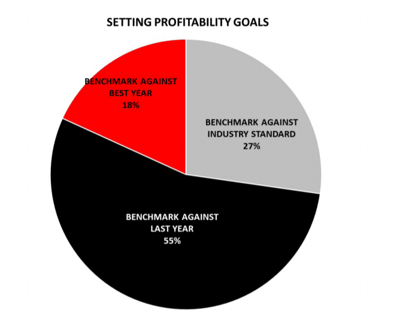Working with about 50 firms worldwide on improving profitability, management consultant Brian Flynn, P.E., BCEE, has developed a system for what works—no matter the state of the economy.
“If you build your firm or move it in the right direction to where you have high utilization and high profitability, you wind up very resilient to downturns,” says Flynn, author of Maximizing Engineering Firm Profits—Profit Fundamentals.
“I can say it bluntly,” he adds. “If you do it my way, you can take a 30 percent downturn in revenue and not go belly up—and you might even avoid a layoff.”

One Metric Does it All
Top-performing firms use the SUM (salary-to-expense, utilization, multiplier) metric as a comprehensive management tool—a rational analysis that exposes weak spots to focus efforts on.
Flynn advises making a reasonable projection of next year’s net revenue, and reducing it by 10 percent. Calculate the “U” needed at your current “S” and “M” to yield, say, 20 percent RON.
This sets your utilization goals. If revenue is higher than 90 percent, your profit goes up. Put up with high workload until overtime approaches 10 percent. It might take a while to right size your workforce through attrition. In today’s marketplace, it’s important to hire behind the work. While that may put some stress on your staff, and you’ll have to figure out ways to motivate them, compensate them well and you’re more likely to see handsome profits—which means attractive bonus programs.
To make the work that comes in more profitable, make it lump sum.
According to Flynn: “It has to have a very definable scope, and you need an experienced project manager who is committed to bringing it in under budget—without worrying about the team’s utilization goals. You can make a lot of money that way, and then each one of those [extra] dollars goes toward the bottom line.”
How else to improve financial performance?
Insist on change of scope when needed. Put a line item in your proposals showing dollars for out-of-scope items. Flynn has never been shy about explaining to clients that he needs to make a living just like they do. “Sometimes it’s nickel-and-dime stuff, but it adds up.”
Know your clients. A client satisfied with a job done quickly likely will come to you with another job sooner rather than later, so figure out which projects can move easily to the head of the line.
Use data. “So far I have not found a firm that looks at new business development and generating work with existing clients in a quantifiable manner,” says Flynn.
Firms should run their biggest in-house nonbillable project—marketing and sales—with stringent direction. For example, know what your client replacement rate needs to be.
Review KPIs monthly, not weekly. This can tell you how much profit you’ve made, and help determine whether SUM calculations are matching the firm’s goals. Then you can troubleshoot.
Look at non-labor overhead expenses. “See if there are some obvious things you should kill instantly there,” Flynn says.
 PSMJ's A/E Strategic Planning Study is available for purchase or as a free download to PSMJ members.
PSMJ's A/E Strategic Planning Study is available for purchase or as a free download to PSMJ members.



